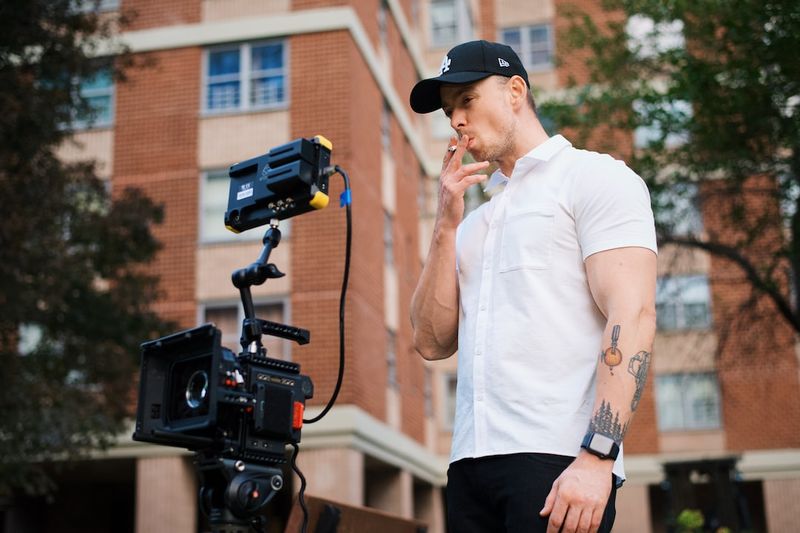The Super Mario Bros. Movie: Nostalgia and Adaptations
Introduction
With the release of “The Super Mario Bros. Movie” on Peacock, fans of the iconic video game franchise can now indulge in a new adaptation of their beloved characters and world. Starring Chris Pratt as Mario and Charlie Day as Luigi, the animated film takes viewers on a nostalgic journey through the Mushroom Kingdom and beyond. It promises to not only captivate audiences with its familiar characters and storyline but also offers bonus content and interactive features to enhance the viewing experience.
A Tribute to Nostalgia
“The Super Mario Bros. Movie” capitalizes on the power of nostalgia, tapping into the enduring love fans have for the video game franchise that has entertained generations. The film’s inclusion of A-list voice actors, such as Pratt, Day, and Anya Taylor-Joy as Princess Peach, adds star power and further legitimizes the adaptation. By staying true to the original characters and their iconic voices, the movie aims to transport viewers back to their childhoods and reignite their passion for the Mushroom Kingdom.
The Success of Adaptations
Video game adaptations have historically struggled to find success on the big screen. However, “The Super Mario Bros. Movie” bucks this trend, generating a billion-dollar box office performance within its first month of release. This achievement speaks to the power and enduring popularity of the Mario franchise, as well as the skillful execution of the adaptation. It is a testament to the potential of translating beloved games into successful cinematic experiences.
The Challenges of Nostalgia
While nostalgia can be a powerful tool, it also presents certain challenges for adaptations. Meeting the expectations of fans can be a daunting task, as they hold strong emotional attachments to the original material. Any deviation from what they remember and love can be met with disappointment and criticism. Consequently, striking a balance between honoring the source material and offering fresh and engaging storytelling becomes crucial for the success of adaptations.
The Role of Adaptations in Popular Culture
Adaptations, whether of video games, books, or other media, serve to further immerse audiences in the worlds they cherish. They can introduce beloved characters and narratives to new generations, extending the reach and impact of the original source material. Moreover, adaptations can act as a bridge between different forms of artistic expression, bringing together the realms of gaming, film, and nostalgia.
The Influence of Super Mario Bros.
The significance of Super Mario Bros. in popular culture cannot be overstated. Since its debut in 1985, Mario has become an enduring icon, representing both Nintendo’s success in the gaming industry and the broader impact of video games on society. The characters and world of Super Mario Bros. have transcended their medium, permeating various aspects of popular culture. This enduring legacy contributes to the anticipation and reception of adaptations like “The Super Mario Bros. Movie.”
Editorial: The Pros and Cons of Video Game Adaptations
Video game adaptations have always been met with skepticism due to the checkered past of such endeavors. However, “The Super Mario Bros. Movie” demonstrates that successful adaptations are possible when handled attentively, respecting the source material while still delivering an entertaining cinematic experience.
On the positive side, video game adaptations introduce beloved gaming worlds to wider audiences. They allow gamers to see their favorite characters come to life on the big screen and give non-gamers an opportunity to engage with these rich and imaginative universes. Successful adaptations can also foster further interest and investment in the original games, benefiting both the gaming industry and fans.
However, there are challenges inherent to the adaptation process. Translating the interactive and immersive nature of video games into a passive viewing experience can be a difficult task. Additionally, the expectations and preconceived notions of fans can be hard to meet, leading to negative reception and disappointment. Balancing the needs of both loyal fans and new viewers can be a delicate tightrope for filmmakers to walk.
Ultimately, for video game adaptations to succeed, they must be treated as more than mere cash-grabs. They require thoughtful storytelling, respect for the source material, and a dedication to creating a compelling cinematic experience that stands on its own merits.
Advice: Navigating the Adaptation Landscape
With the increasing popularity of video games, adaptations are likely to continue being a prominent part of popular culture. To navigate this landscape successfully, both filmmakers and fans can benefit from certain considerations.
For Filmmakers:
- Stay true to the essence: Understand the core elements that make the game beloved and find ways to translate them effectively on the screen.
- Embrace creativity: While fidelity to the source material is vital, don’t be afraid to add new elements and storylines that enhance the cinematic experience.
- Respect the fans: Engage with the gaming community, listen to their feedback, and involve them in the development process to ensure their expectations are considered.
For Fans:
- Have an open mind: Understand that adaptations will not be exact replicas of the gaming experience. Appreciate the unique qualities that the medium of film can bring to the narrative.
- Constructive criticism: Provide feedback in a constructive and respectful manner, highlighting aspects you appreciate and offering suggestions for improvement.
- Support the originals: Remember that video game adaptations are an extension of the gaming world. Supporting the original games and their developers can help ensure the longevity and quality of beloved franchises.
Conclusion
“The Super Mario Bros. Movie” represents a milestone in video game adaptations and underscores the enduring power of nostalgia. With careful attention to the source material and a dedication to creating an engaging cinematic experience, adaptations have the potential to captivate audiences and extend the impact of beloved games. As video game adaptations continue to evolve, embracing creativity and respectful engagement between filmmakers and fans will be crucial in navigating this ever-expanding landscape.

<< photo by Suzy Hazelwood >>
The image is for illustrative purposes only and does not depict the actual situation.
You might want to read !
- Meg 2: The Trench review: Ben Wheatley’s sequel dives into disappointment
- “The Meg 2: The Trench” Review: Diving into Deeper Depths
- “Surviving the Shore: Navigating Season 6 of MTV’s ‘Jersey Shore: Family Vacation’”
- Navigating the Jersey Shore: Family Vacation’s Season 6 Episode 18
- “The Lincoln Lawyer Season 2: A Riveting Verdict Unveils the Verdict on Binge-Worthiness”
- The Boston Red Sox Reinforce Their Roster with the Addition of Infielder Luis Urias
- Where to Find Heartwarming Romance: When Calls The Heart Season 10 Streaming Guide
- The Angels’ Big Move: Analyzing the Lucas Giolito Trade




